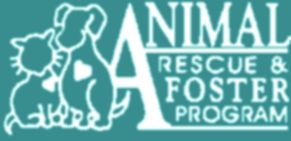How to Crate Train Your Dog
Your dog should thoroughly enjoy spending time in his crate. This can be accomplished by introducing him to the crate properly, making it comfortable and fun to go into the crate, and by giving him something entertaining to do in the crate. Below is a step-by-step outline of the recommended process:
Set-Up
- Set up the crate with the puppy out of the room, so as not to startle him.
- Use old blankets, towels or sheets as bedding. Note: many puppies will chew bedding which can be very dangerous so take time to observe if he is trying to chew his bedding. Do not make the bedding material too absorbent because the puppy needs to be severely inconvenienced if he urinates in his crate.
- DO NOT use housebreaking pads in the crate because this will attract and encourage the puppy to eliminate in his crate.
- DO NOT put a water bowl in the crate because it will spill and wet the bedding.
- DO put 1 – 2 safe chew toys in the crate with the puppy so he has something to occupy his time — a Tuffy Kong toy is one of the best and safest toys to leave a puppy alone with. Stuffing a Kong toy with freeze-dried liver or a biscuit can keep the puppy entertained. Do not leave a puppy alone with a toy that can splinter or break off in small pieces, such as rib bones and rawhide bones. These are chew toys that should be supervised as they may cause the puppy to choke.
- If you are using a wire crate, place an old blanket or sheet over the top and sides in order to create a den-like atmosphere. Tuck the ends of the covering under the crate so that the puppy cannot pull them inside to chew on them
Introduction and Use of the Crate
- When it is time for the puppy’s meal, place the bowl just inside of the crate so the puppy has to stick his head into the crate to eat.
- Between feedings, you can make going into the crate a game by tossing in treats or toys. Allow your puppy to come and go at will — do not force your puppy into the crate.
- When the puppy gets in the crate on his own or because their is a treat inside, this is your cue to start associating a command with the action. You can use statements such as “kennel up” or “go to bed.” The most important thing to remember in giving commands is to be brief and consistent.
- Always leave the crate door open when your puppy is out of the crate so he can get in it when he wants.
- When you are home, make going in the crate a game. Give your chosen command, such as “go to bed,” and throw a treat or toy into the crate. Let your puppy walk in and out of the crate at will. Whenever your puppy goes into the crate on his own, lavish him with praise!
- Each time the puppy enters his crate for confinement, give him a tasty treat such as Bil-Jac Liver Treats, jerky treats, cat treats, or a small piece of hot dog or cheese.
- ALWAYS use your chosen command when calling your dog to the crate for confinement. DO NOT simply call him to you, as he may become wary of approaching you when called.
- NEVER USE THE CRATE AS PUNISHMENT! Your dog will pick up “vibes” from you if you put him in the crate when you are angry. The puppy’s crate should be his secure place. It should not be associated with punishment, fear, or anything negative. If you treat the crate as a wonderful, gentle, lifesaving tool to prevent accidents, destruction, and behavior problems, your puppy will feel positive about the crate, too.
- Every time you let the puppy out of his crate, even if he has only been confined 30 minutes, take him straight outside to his “potty” area and give him your command such as “go potty” or “hurry up.” Praise him when he eliminates outside. If the puppy does not eliminate within five minutes and you know it is time for him to do so, put him back in the crate. Wait approximately 30 minutes and then take him outside again. In the morning, be sure to take the puppy out the minute he starts to fuss.
- If the puppy eliminates in his crate, clean it up immediately and thoroughly. After cleaning up the urine, wipe the bottom of the crate with a pet odor eliminating product or a solution of vinegar and water. It is necessary to clean up the odor completely so the puppy does not smell it later and urinate there again.
- During all unsupervised times, the puppy should be in his crate with the door closed. Normal, healthy puppies will generally get into mischief if unattended. The tendency of puppies to “learn” about their surroundings is too strong for them to control — learning means chewing, scratching, and digging. If the puppy is unable to get into trouble, destructive habits will not be formed.
- As your puppy gets older (probably close to 1 year old), you can start leaving him out of the crate unattended for short periods of time. When you first leave him unattended and out of the crate, restrict him to one or two rooms in the house. If the puppy behaves in your absence, gradually increase his time out of the crate with the ultimate goal being never having to close him in his crate. However, he should continue to have access to his crate whenever he wants. If the puppy gets into mischief in your absence, begin to crate him again whenever he is unsupervised and try again later.
